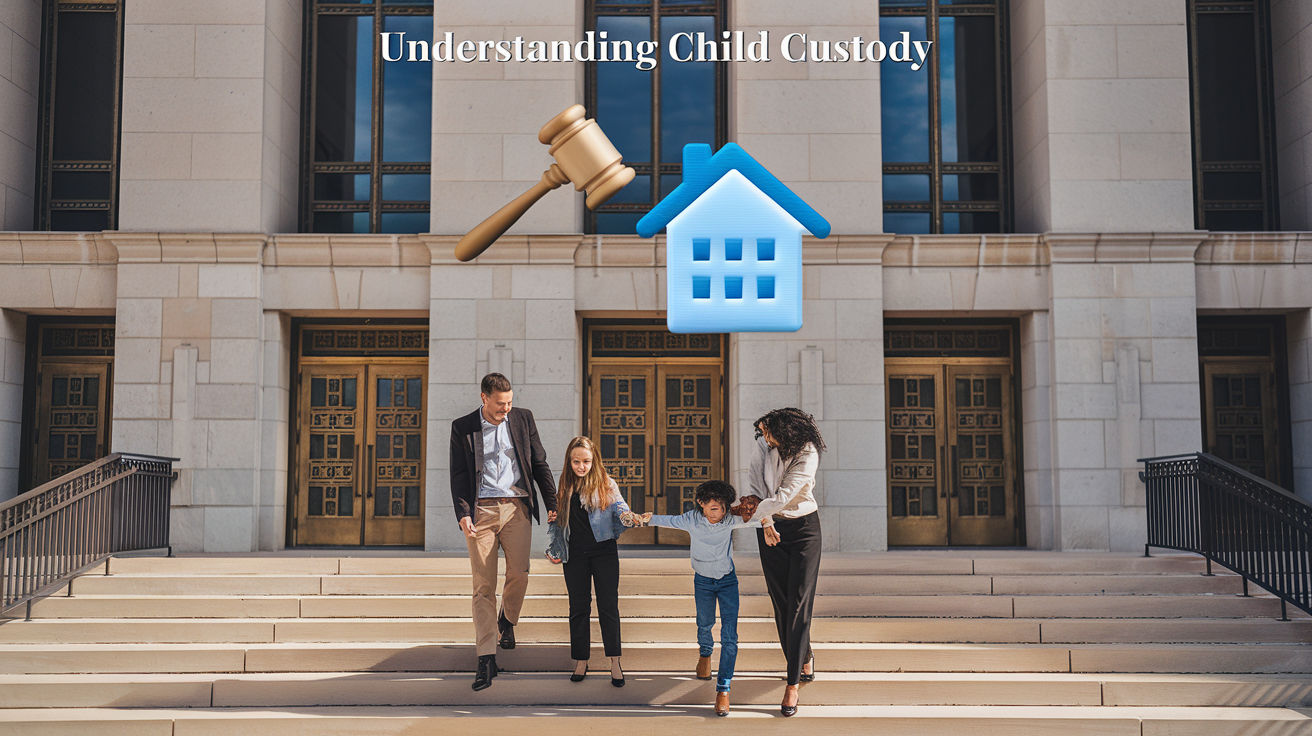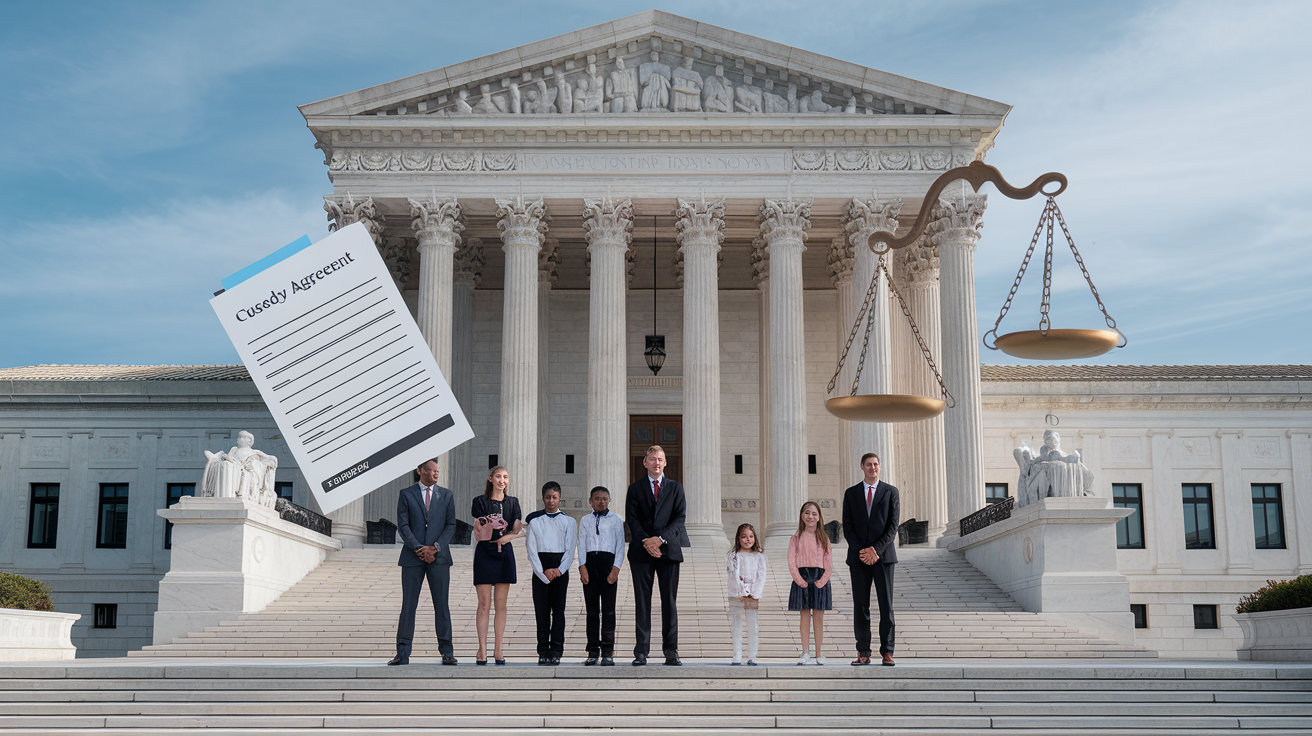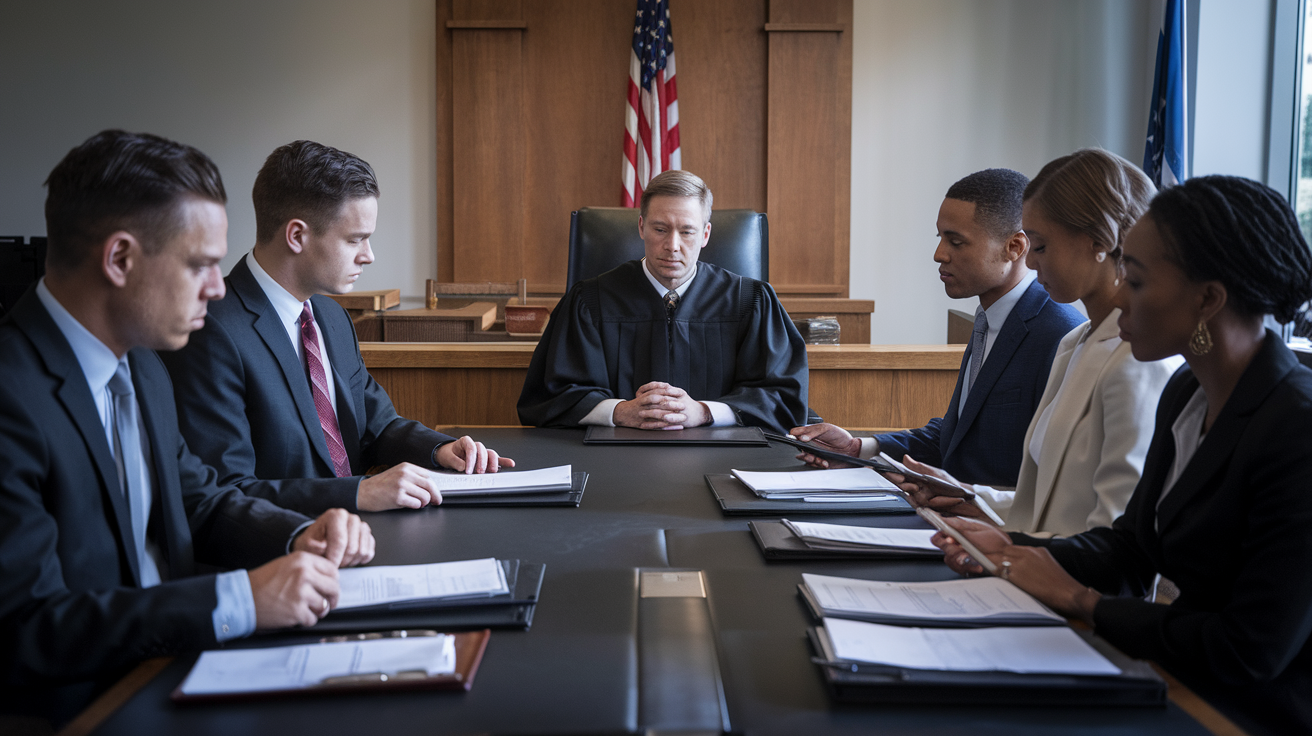
Decoding the Complexities of Legal and Physical Child Custody: What You Need to Know
Navigating the maze of child custody can feel overwhelming. Whether you’re facing a divorce or separation, understanding the intricacies of legal and physical custody is crucial for protecting your child’s well-being and your parental rights. But with terms like “sole custody,” “joint custody,” and “best interests of the child” swirling around, how can you make sense of it all?
Don’t worry – you’re not alone in this journey. Decoding the complexities of child custody is essential for every parent facing this challenging situation. In this comprehensive guide, we’ll unravel the mysteries of legal and physical custody, explore various custody arrangements, and shed light on the factors courts consider when making these life-changing decisions. We’ll also delve into parental rights and responsibilities, the process of modifying custody orders, and effective ways to resolve custody disputes.
As we embark on this exploration of child custody, remember that knowledge is power. By understanding the ins and outs of custody arrangements, you’ll be better equipped to make informed decisions that prioritize your child’s best interests while navigating the emotional and legal challenges ahead. Let’s dive in and demystify the world of child custody together.
Understanding Legal and Physical Custody

Definition of legal custody
Legal custody refers to the authority granted to a parent or guardian to make significant decisions regarding a child’s upbringing. This includes crucial aspects of the child’s life such as education, healthcare, and religious upbringing. When a parent has legal custody, they have the right and responsibility to be involved in these critical choices that shape the child’s future.
Legal custody can be awarded as either sole or joint. In cases of joint legal custody, both parents are required to work together and reach agreements on major decisions that affect their child. This arrangement encourages ongoing involvement from both parents in the child’s life, even if they are no longer living together. However, it’s important to note that in some joint legal custody situations, one parent may be given tiebreaking authority if a mutual decision cannot be reached.
Definition of physical custody
Physical custody, on the other hand, pertains to where the child lives and who provides daily care. This aspect of custody determines which parent the child lives with and who is responsible for the child’s day-to-day care and supervision. Physical custody arrangements can vary widely depending on the specific circumstances of each family.
Like legal custody, physical custody can be sole or shared. In a sole physical custody arrangement, the child primarily lives with one parent, while the other parent may have visitation rights. Shared physical custody allows both parents to have substantial time with the child, typically arranged through various schedules that take into account practical considerations such as work commitments, school schedules, and the child’s needs.
Importance of distinguishing between the two
Understanding the distinction between legal and physical custody is crucial for several reasons:
- Parental involvement: Legal custody ensures that both parents can remain involved in important decisions about their child’s life, even if they don’t have physical custody. This distinction allows for continued parental influence and responsibility beyond just physical presence.
- Decision-making authority: Knowing who has legal custody clarifies which parent(s) have the right to make critical decisions about the child’s upbringing. This clarity can help prevent conflicts and ensure that the appropriate party makes essential choices.
- Living arrangements: Physical custody determinations directly impact where the child will reside and how much time they will spend with each parent. This affects the day-to-day life of both the child and the parents.
- Child’s best interests: By separating legal and physical custody, courts can create arrangements that best serve the child’s needs. For example, one parent might be better suited for daily care (physical custody) while both parents are equally capable of making important decisions (joint legal custody).
- Flexibility in arrangements: The distinction allows for various combinations of custody arrangements, such as joint legal custody with sole physical custody, which can be tailored to each family’s unique situation.
- Legal implications: Understanding these differences is crucial for parents navigating the legal system, as they affect their rights, responsibilities, and potential court orders.
By clearly defining and distinguishing between legal and physical custody, parents, legal professionals, and courts can work together to create custody arrangements that prioritize the child’s well-being while respecting the roles and rights of both parents.
Now that we have covered the fundamental differences between legal and physical custody, we’ll explore the various types of custody arrangements in the next section. These arrangements combine elements of both legal and physical custody to create comprehensive plans that serve the child’s best interests.
Types of Custody Arrangements

Now that we have covered the basics of legal and physical custody, let’s explore the various types of custody arrangements that parents may encounter during separation or divorce proceedings.
A. Sole custody (physical and legal)
Sole custody is an arrangement where one parent has exclusive physical and legal custody of the child. This means that the child resides primarily with one parent, who also has the sole authority to make crucial decisions regarding the child’s upbringing. Sole custody may be granted in situations where there are concerns about one parent’s ability to care for the child, such as in cases of abuse or neglect.
In a sole custody arrangement:
- The custodial parent has full-time care of the child
- The non-custodial parent may have visitation rights, which can be unsupervised or supervised depending on the circumstances
- The custodial parent has exclusive decision-making authority regarding the child’s education, healthcare, and other significant aspects of their life
B. Joint custody (physical and legal)
Joint custody is an arrangement where both parents share responsibility for the child’s care and upbringing. This can involve both physical and legal custody aspects. Joint custody arrangements are often preferred when both parents are capable of providing a stable environment for the child and can cooperate effectively.
In a joint custody arrangement:
- Both parents have significant periods of physical custody of the child
- Parents share decision-making authority regarding essential aspects of the child’s life
- The time spent with each parent may not necessarily be equal, but is typically substantial for both
C. Shared custody
Shared custody is a specific type of joint custody arrangement where parents aim for an equal or nearly equal division of time and responsibilities. This arrangement requires a high level of cooperation and communication between parents.
In a shared custody arrangement:
- The child spends approximately equal time with both parents
- Both parents have equal decision-making authority
- Parents often alternate custody on a weekly or bi-weekly basis, or use other schedules that work best for the family
It’s important to note that custody arrangements can be flexible and tailored to the specific needs of the family. Parents are encouraged to create a parenting plan that outlines the terms of custody and visitation. This approach is typically more beneficial as it promotes cooperation and minimizes conflict between parents.
When parents cannot agree on a custody arrangement, mediation may be employed to facilitate discussions. In some cases, a custody evaluation may be necessary, where a professional assesses the situation to guide the court’s decision.
Regardless of the type of custody arrangement, the primary consideration is always the child’s best interest. This principle guides all custody decisions, ensuring that the child’s needs are prioritized.
With these custody arrangements in mind, we will next explore the factors considered in custody decisions. These factors play a crucial role in determining which type of custody arrangement is most appropriate for each unique family situation.
Factors Considered in Custody Decisions

Now that we’ve explored the various types of custody arrangements, it’s crucial to understand the factors that courts consider when making custody decisions. These factors play a significant role in determining the most suitable arrangement for the child’s well-being.
Best interests of the child
The paramount principle guiding child custody decisions is the “best interests of the child.” This legal standard prioritizes the child’s overall well-being and unique needs. Courts evaluate a multitude of interconnected factors holistically, including:
- The child’s safety
- Quality of relationships with each parent
- Developmental needs
- Stability of home environments
- Continuity in the child’s life (schooling and community ties)
Additionally, courts consider any history of domestic violence, substance abuse, or child neglect, as these significantly influence custody decisions. The mental and physical health of all parties involved is also taken into account, along with cultural and religious factors that may impact the child’s upbringing.
Parental preferences and capabilities
When assessing parental preferences and capabilities, courts focus on several key aspects:
- Ability to provide for the child’s emotional and physical needs
- Work availability and flexibility
- Effective co-parenting capabilities
- Financial and emotional support capacity
- Involvement in the child’s life
Courts favor parents who demonstrate a willingness to engage constructively and communicate effectively, especially in cases involving joint custody. The moral fitness of each parent, reflecting their ethical standards and behavior, is also considered as it influences their suitability as a role model.
Child’s relationship with each parent
The emotional bond between a child and their parents is a pivotal consideration in custody determinations. Courts examine:
- Quality of parent-child relationships
- Parental involvement in the child’s life
- Capacity to support the child’s development
- Evidence of emotional neglect or abuse
Legal precedents, such as Troxel v. Granville, underscore the significance of consistent parental presence, especially from primary caregivers. Psychological evaluations may be used to provide further insight into the child’s attachment to each parent.
Child’s preferences (when appropriate)
A child’s preferences can influence custody decisions, particularly for older children (typically 12 and above). However, courts carefully assess:
- The informed nature of the child’s preferences
- The child’s maturity level
- Whether the preferences align with the child’s best interests
It’s important to note that while a child’s preferences are considered, they are not the sole determining factor in custody decisions. Courts balance these preferences against other relevant factors to ensure the child’s overall well-being.
As we transition to discussing parental rights and responsibilities, it’s essential to understand that the factors considered in custody decisions form the foundation for determining how these rights and obligations are allocated. The court’s assessment of each parent’s capabilities, the child’s needs, and the overall family dynamics will shape the specific rights and obligations assigned to each parent in the custody arrangement.
Parental Rights and Responsibilities

Now that we’ve explored the factors considered in custody decisions, let’s delve into the crucial aspects of parental rights and responsibilities that come with child custody arrangements.
Decision-making authority in key areas
When it comes to parental rights and responsibilities, decision-making authority plays a pivotal role. Depending on the custody arrangement, parents may have different levels of authority in key areas of their child’s life. In shared parental rights scenarios, both parents are required to make decisions about their child’s welfare jointly. This collaborative approach ensures that both parents have a say in important matters such as education, healthcare, and religious upbringing.
On the other hand, sole parental rights grant one parent exclusive decision-making authority. This arrangement is typically implemented in cases where shared decision-making may be harmful to the child, such as in situations involving abusive behavior. The parent with sole rights has the responsibility to make choices that are in the child’s best interest, although they may still be subject to court oversight if their decisions are deemed detrimental to the child’s well-being.
In some cases, an allocated parental rights arrangement may be established. Although less common, this setup allows each parent to make specific decisions about different aspects of the child’s upbringing. For instance, one parent might be responsible for educational decisions, while the other handles healthcare choices.
Providing emotional and financial support
Regardless of the custody arrangement, both parents have the responsibility to provide emotional and financial support for their child. The custodial parent, who has physical custody, plays a significant role in establishing a stable support system for the child. This includes meeting basic needs, fostering emotional well-being, and creating a nurturing environment.
Financial support is a crucial aspect of parental responsibilities, particularly for the non-custodial parent. They are typically obligated to provide financial assistance to ensure the child’s needs are met. This financial support helps maintain the child’s standard of living and contributes to their overall well-being.
Emotional support extends beyond the custodial parent’s duties. Non-custodial parents are encouraged to maintain active involvement in their child’s life to mitigate feelings of absence. This involvement can include regular visitation, participation in important events, and maintaining open lines of communication.
Creating and following a structured parenting plan
A structured parenting plan is essential for effectively managing parental rights and responsibilities. This plan outlines how parents will share their responsibilities and make decisions regarding their child’s upbringing. It typically includes details about custody schedules, decision-making processes, and methods for resolving disputes.
Creating a comprehensive parenting plan helps ensure that both parents understand their roles and responsibilities. It can address various aspects of the child’s life, such as:
- Physical custody arrangements and visitation schedules
- Decision-making processes for education, healthcare, and extracurricular activities
- Communication methods between parents and with the child
- Procedures for handling changes or conflicts in the arrangement
Following the parenting plan is crucial for maintaining stability in the child’s life and fostering a cooperative co-parenting relationship. Adherence to the plan demonstrates respect for both parents’ rights and responsibilities, ultimately benefiting the child’s emotional and developmental needs.
As we’ve explored the various aspects of parental rights and responsibilities, it’s important to note that these arrangements are not set in stone. In the next section, we will discuss the process of modifying custody orders, which may be necessary when circumstances change or the current arrangement no longer serves the child’s best interests.
Modifying Custody Orders

Now that we have covered parental rights and responsibilities, it’s essential to understand that custody arrangements aren’t set in stone. Let’s explore the process of modifying custody orders and the circumstances that may warrant such changes.
Circumstances warranting modification
Child custody orders can be modified when there’s a substantial change in circumstances since the original order was issued. Courts prioritize the child’s best interests and stability when considering modifications. Some common grounds for seeking a change in custody arrangements include:
- Changes in the child’s needs: As children grow, their requirements may evolve, necessitating adjustments to custody arrangements.
- Parental relocation: If one parent needs to move for work or other reasons, it may impact the existing custody arrangement.
- Alterations in a parent’s work or living situation: Changes in employment or living conditions can affect a parent’s ability to care for the child.
- Safety concerns: Evidence of abuse, neglect, or substance abuse may prompt a custody modification.
- Violations of existing orders: If a parent consistently fails to comply with the current custody order, it may warrant a change.
- Improvements in a previously unfit parent’s situation: If a parent has addressed issues that previously limited their custody rights, they may seek modification.
Legal processes involved
Modifying a custody order involves a formal legal process. Here are the key steps:
- Please consult an attorney: It’s advisable to seek legal counsel to navigate the complexities of custody modifications.
- Attempt to reach an agreement: Try to settle with the other parent before involving the court.
- File a formal petition: Submit a petition articulating the reasons for the proposed modification.
- Serve the other parent: Ensure proper service of documents, which may involve professional services like Undisputed Legal.
- Prepare for hearings: Gather evidence and documentation to support your case.
- Court decision: The judge will review the case and make a decision based on what is in the child’s best interests.
The burden of proof lies with the parent seeking modification. They must demonstrate both the changed circumstances and the benefits of the proposed changes. Some jurisdictions may require mediation to facilitate parental agreements before proceeding to court.
Impact of parental relocation
Parental relocation can significantly impact custody arrangements and often necessitates modifications. When a custodial parent wishes to move, they typically need court approval, especially if the move would substantially affect the non-custodial parent’s visitation rights.
Courts consider several factors when evaluating relocation requests:
- The reason for the move
- The potential benefits to the child
- The impact on the child’s relationship with the non-relocating parent
- The feasibility of maintaining the current custody arrangement
In some cases, courts may allow the move but adjust the custody schedule to ensure continued contact with both parents. This might involve extended summer visitations or more frequent holiday stays with the non-relocating parent.
As we transition to discussing the resolution of custody disputes, it’s important to note that the modification process can sometimes lead to disagreements between parents. Understanding the legal processes and potential impacts of modifications can help parents navigate these challenges more effectively, always keeping the child’s best interests at the forefront.
Resolving Custody Disputes

Now that we’ve explored the process of modifying custody orders, let’s delve into the crucial topic of resolving custody disputes. While modifications can address changing circumstances, sometimes parents face more significant disagreements that require careful resolution.
Mediation as an alternative to court
When parents disagree over custody arrangements, mediation offers a valuable alternative to lengthy and costly court battles. This process involves a neutral third party, often a family law expert, who facilitates discussions between the parents to reach a mutually agreeable solution. Mediation can be particularly beneficial in high-net-worth divorces, where complex financial situations may complicate custody arrangements. By opting for mediation, parents can maintain more control over the outcome and potentially uncover hidden assets that might impact custody decisions.
Benefits of amicable solutions
Resolving custody disputes amicably through mediation or other alternative dispute resolution methods offers several advantages:
- Reduced stress: Avoiding court proceedings can significantly decrease the emotional toll on all parties involved, including children.
- Cost-effective: Mediation is often less expensive than protracted legal battles, preserving financial resources for the family’s future needs.
- Faster resolution: Unlike court cases that can drag on for months or even years, mediation can lead to quicker resolutions.
- Improved communication: The process encourages parents to work together, potentially setting a positive tone for future co-parenting efforts.
- Customized solutions: Mediation allows for more flexible and tailored custody arrangements that take into account the unique needs of the family.
Role of family law attorneys
While mediation can be an effective tool, the involvement of experienced family law attorneys remains crucial in resolving custody disputes. These legal professionals play several vital roles:
- Legal guidance: Attorneys ensure that parents understand their rights, responsibilities, and the potential implications of various custody arrangements.
- Advocacy: In cases where mediation is not suitable or fails to produce results, attorneys can represent their clients’ interests in court.
- Documentation: Lawyers help draft and review custody agreements, ensuring that all legal requirements are met and the contract is enforceable.
- Financial expertise: In high-net-worth divorces, attorneys with specialized knowledge can help uncover hidden assets and ensure fair financial arrangements that impact custody decisions.
- An objective perspective: Attorneys can provide a balanced view of the situation, helping parents make decisions that prioritize the child’s best interests.
It’s worth noting that while prenuptial agreements are becoming increasingly common for dual-income couples, they typically focus on financial matters rather than custody arrangements. However, creating a prenup can set a precedent for open communication and collaboration, which can be beneficial if custody disputes arise later.
As we transition to the next section on the impact of custody arrangements on children, it’s important to remember that the way parents approach and resolve custody disputes can significantly affect their children’s well-being. By prioritizing amicable solutions and seeking professional guidance when needed, parents can work towards custody arrangements that genuinely serve the best interests of their children.
Impact of Custody Arrangements on Children

Now that we’ve explored methods for resolving custody disputes, it’s crucial to understand the profound impact that custody arrangements can have on children. Let’s explore the effects these decisions can have on a child’s development and well-being, the importance of co-parenting, and strategies for reducing conflict.
Effects on child development and well-being
Custody arrangements, particularly those involving joint physical custody, can significantly impact a child’s emotional and developmental well-being. According to Dr. Christine B. L. Adams, while 50/50 custody arrangements may seem fair from an adult perspective, they often prioritize parental needs over the child’s emotional requirements.
Children in shared custody situations may experience:
- Confusion and anxiety due to constant transitions between households
- A sense of rootlessness and disorganization
- Pressure to care for the emotional well-being of struggling parents
- Role reversals, where children feel responsible for their parents’ emotions
- Significant emotional distress, including anxiety and depression
- Issues with self-esteem, particularly when unable to meet parental expectations
It’s important to note that while some children may appear to adapt without apparent signs of distress, many still struggle internally with the challenges of shared custody. The constant back-and-forth between homes can create a sense of instability that may hinder healthy emotional development.
Importance of co-parenting and cooperation
Despite the potential challenges, effective co-parenting and cooperation between divorced or separated parents are crucial for minimizing negative impacts on children. The reference content suggests that children often thrive better in a stable living situation with one primary caregiver, complemented by visitation with the other parent.
Key points to consider:
- Courts should prioritize the child’s emotional stability over strict adherence to equal time division
- Determining which parent can provide appropriate care is essential for the child’s healthy development
- Not all parents can equally fulfill the nurturing role needed by their children
Strategies for minimizing conflict
To mitigate the potential adverse effects of custody arrangements on children, parents ,and courts should consider the following strategies:
- Prioritize the child’s emotional needs: Focus on creating a stable environment that supports the child’s developmental needs, rather than solely on dividing time equally.
- Listen to the child’s voice: Children may express preferences for living arrangements based on which parent provides more consistent emotional support. It’s essential to consider these preferences without misinterpreting them as a form of parental alienation.
- Recognize individual parenting capabilities: Acknowledge that not all parents may be equally equipped to provide the necessary emotional support and stability.
- Implement flexible arrangements: Consider custody arrangements that allow for a primary caregiver while ensuring the other parent has meaningful involvement through visitation.
- Emphasize cooperation: Encourage parents to work together in the child’s best interest, focusing on providing a united front and consistent emotional support.
- Seek professional guidance: When necessary, involve mental health professionals or mediators to help navigate complex emotional dynamics and ensure the child’s needs are met.
By carefully considering these factors and strategies, parents and courts can work towards custody arrangements that truly prioritize the child’s well-being, minimizing potential negative impacts on their emotional and psychological development. It’s crucial to remember that each child’s situation is unique, and custody decisions should be tailored to meet their individual needs rather than adhering to a one-size-fits-all approach.

Understanding the intricacies of legal and physical child custody is crucial for parents navigating divorce or separation. From distinguishing between different types of custody arrangements to recognizing the factors courts consider in their decisions, this knowledge empowers parents to make informed choices that prioritize their children’s well-being. It’s essential to remember that custody arrangements can be modified as circumstances change, and various methods, such as mediation, can help resolve disputes in an amicable way.
As you navigate the complexities of child custody, remember that the ultimate goal is to create a supportive environment for your children. Whether you’re facing custody challenges or seeking to modify existing arrangements, consider seeking professional guidance to ensure you’re making decisions that align with your children’s best interests. By understanding your rights and responsibilities as a parent, you can work towards fostering a positive co-parenting relationship that supports your children’s growth and development.










